Self-Consolidating Grout: This Isn't Your Father's Grout Mix
By Robert Ryan, Jennie Farnsworth
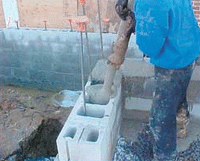 Photo courtesy of Lafarge North America |
The difference between SCG and conventional grout starts with the mix design. SCG contains higher than normal cementitious content, a blend of fine and coarse aggregates with a maximum stone top size of 3/8", a high sand/aggregate ratio, a polycarboxylate-based high-range water-reducing admixture, and an optional viscosity modifying admixture to achieve a mix with a measured slump flow spread between 25 to 29 inches (Figure 1).
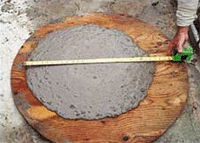 Figure 1 - Achieve a SCG mix with a measured slump flow spread between 25 to 29 inches. Photo courtesy of Master Builders, Inc. |
Benefits of Using SCG
The use of SCG provides numerous benefits for concrete masonry contractors.
Time Savings
Conventional grout mixes often require job site re-tempering with water to facilitate easier ready-mix truck discharge and grouting of masonry walls. This can be time consuming and reduce grout strength performance. In contrast, SCG mixes don't require additional water, are ready for immediate use upon arrival at the job, and achieve higher strength performance without job site re-tempering with water.
However, the most important benefits are faster truck unloading, mix pumping and placement of SCG, which in turn result in faster grouting of concrete masonry walls, improved labor efficiency, and lower in-place grout costs.
"Now, if mason contractors have any kind of small-line pump, they can dump one of our trucks in 15-20 minutes or so," says Roger Hall, Director of Marketing for Branded Products for Lafarge Construction Materials. "So it's a good turn-around for us, doesn't tie our equipment up too long, and it really enables the mason contractor to do his or her job much, much quicker, with far less labor."
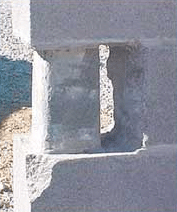 Figure 2 - SCG has improved engineering properties, including reduced vertical core voids. Photo courtesy of Lafarge North America |
Another benefit of SCG is the ability to assign crewmembers to other tasks at the job site while you're still grouting the wall.
"Using SCG, mason contractors will reduce the number of the crew, as well as the number of hours to do the job," states Hall.
"If we put two of the same walls up side-by-side ? I'm using self-consolidating grout and you're using traditional grout ? you're going to use probably five people and I'm going to use two people," says Hall. "On top of that, you're going to take six hours to complete and I'm going to take half that time."
Less Call-backs
Contractor call-backs to masonry wall projects because of questionable grout performance or structural integrity can be expensive and a loss of valuable time.
SCG has improved engineering properties including increased compressive strength, reduced vertical core voids (Figure 2), and improved structural integrity of reinforced concrete masonry walls resulting in reduced contractor call-backs.
"You get these so-called 'fins' on the inside of the block," explains Hall. "If your grout isn't that 'flowable,' you could easily get ? right on the underside of one of these fins ? a void. You could possibly even get, depending on how stiff the grout is, bridging or arching, and not get proper consolidation.
"Self-consolidating is so flowable and fluid that it goes in and around all of these obstacles," adds Hall. "There is a security and quality issue there. You're assured of the good consolidation with SCG."
Improved Profits
Mason contractors should expect to pay up to 20% more for SCG versus conventional grout. However, the faster application, reduced labor and fewer call-backs (due to voids or consolidation issues) will easily offset this higher cost.
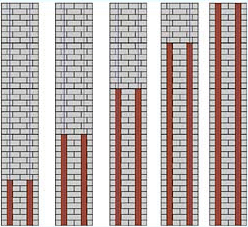 Figure 3 - With the current five-foot lift height, five vibration and consolidation lifts are required to top out a 24-foot tall masonry wall section with grout. Courtesy of The National Concrete Masonry Association | 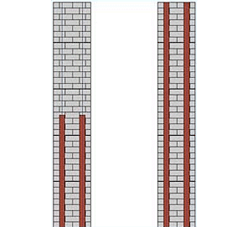 Figure 4 - The new 12-foot, eight-inch lift height will require only two vibration and consolidation lifts to top out a 24-foot tall masonry wall section with grout. Courtesy of The National Concrete Masonry Association |
Recent Code Change
The MSJC has approved a code change proposal submitted by the National Concrete Masonry Association (NCMA) that will increase the maximum lift height for all grout placement from the current 5'-0" to 12'-8". This change was based on research conducted at NCMA and successful grout demonstration panels at various locations around the country. The approval is subject to review by the Technical Activities Committees of both the American Concrete Institute and The Masonry Society before becoming official.
The code change will greatly reduce contractor labor costs and the time required for grouting. With the current five-foot lift height, five vibration and consolidation lifts are required to top out a 24-foot tall masonry wall section with grout (Figure 3). The new 12-foot, eight-inch lift height will require only two vibration and consolidation lifts to top out a 24-foot tall masonry wall section with grout (Figure 4). The next step is to get SCG accepted by the code and eliminate all vibration and consolidation procedures.
SCG can be ordered from most ready-mix concrete producers that meet the mix design requirements mentioned earlier. The use of SCG is increasing throughout the construction industry. All mason contractors should investigate the use of SCG to significantly reduce their grouting time, labor costs and improve their profitability.
About the Authors
Robert Ryan, Segment Marketing Manager - Manufactured Concrete Products at Master Builders, Inc. in Cleveland, Ohio, has been with the company for 35 years, and is a member of various NCMA committees.
Jennie Farnsworth is an Atlanta-based freelance writer and editor. She is a former editor of Masonry magazine.


















